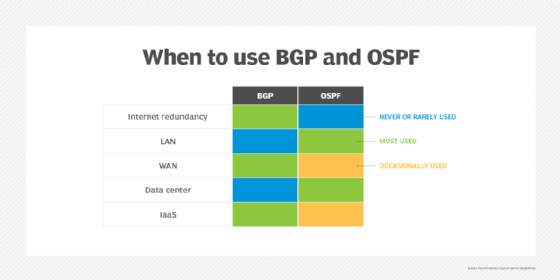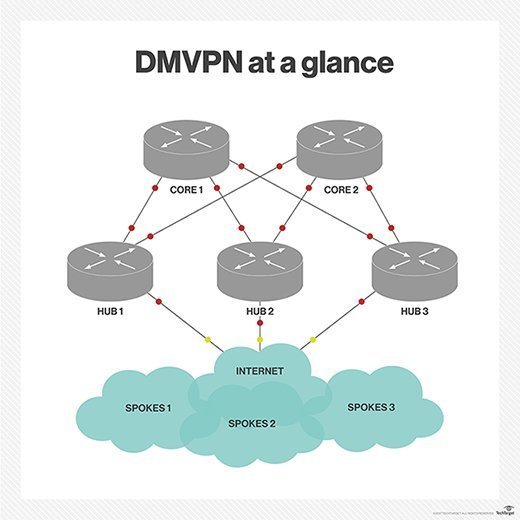NBMA (non-broadcast multiple access)
What is non-broadcast multiple access (NBMA)?
Non-broadcast multiple access (NBMA) is one of four network types in the Open Shortest Path First (OSPF) communications protocol. In an NBMA network all hosts are connected on a single network, but data is sent from one host directly to the next host and is not broadcast across to all hosts. Virtual circuits or switched network fabrics provide the direct communication. It is used in X.25, frame relay, asynchronous transfer mode and powerline networking.
NBMA is a type of OSPF network. The other OSPF network types are broadcast, point-to-point and point-to-multipoint.
Non-broadcast in NBMA means that each data packet is only sent to one destination host. This contrasts with broadcast or multicast networks where each packet is received by all hosts on the network but is only read by its intended recipients.
Switched networks or virtual circuits are used to provide direct routing of data packets. To send a broadcast message to all hosts on a non-broadcast network, a separate packet addressed to each host must be sent. On a broadcast network, all hosts receive and check all packets sent on the network, so a broadcast message to all is simply a single packet that is addressed so all hosts should read it.
Multiple access in NBMA means that a single physical link or interface can communicate with multiple hosts. This contrasts with single access or point-to-point networks where each interface on a host only connects to a single other host. OSPF assumes that all non-broadcast networks are multiple access. Ethernet is commonly multiple access.
An NBMA host must be able to communicate directly with all other hosts on the network, but the hosts may not be directly connected on the same physical link. Because of this, routing information must be shared between nodes. NBMA networks will often use next hop resolution protocol to find routes through the network automatically.

Where are NBMA networks used?
Various technologies are used in NBMA networks to provide the switching or virtual circuits. These can be inherent to the network type itself or be applied as virtual tunnel encapsulation.
Multiprotocol Label Switching and Generalized Multiprotocol Label Switching are examples of network types where individual physical routes are established that may lead to different hosts. In powerline networking, each host pair uses a different underlying communication frequency so that what is broadcast on the same underlying physical wire is not received by other hosts not listening to that frequency; this results in individual channels of communication instead of all hosts communicating on the same channel.
Virtual point-to-point technologies may also result in NBMA networks. Generic Routing Encapsulation (GRE) and Cisco Dynamic Multipoint VPN use underlying IP or Ethernet networks, but use encapsulated virtual tunnels to establish the virtual tunnels between hosts in an NBMA configuration.

Other NBMA network attributes
OSPF networks use timers and HELLO packets to determine if a route is still available. The hello interval sets the amount of time between when devices will send out a HELLO packet. If a host does not receive a HELLO packet from its neighbor on the route within the dead interval, it will declare that the route is unavailable.
The dead interval is generally set to four times the hello interval. For NBMA networks, the hello interval is 30 seconds and the dead interval is 120 seconds.
OSPF on multi-access networks uses designated routers (DRs) and backup designated routers (BDRs). The DR and BDR are elected by the routers on the network to serve as the central point to exchange routing information as link state advertisements. This reduces the amount of traffic required to update the routing information instead of all routers needing to update every other router.








